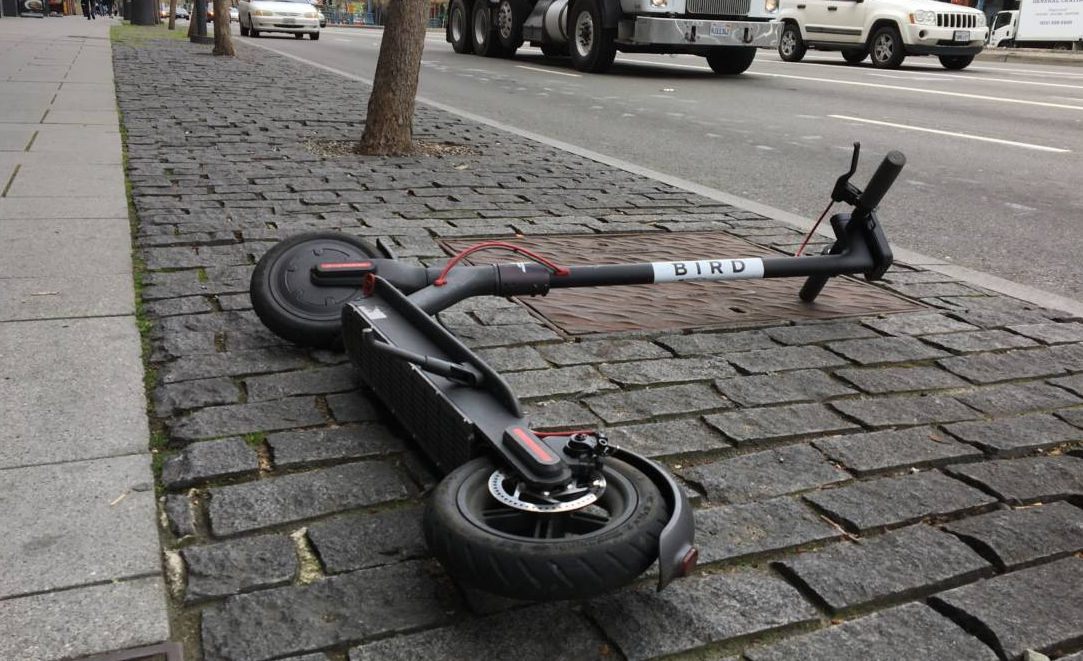“Eco-friendly” scooters revealed to be largely a fraud: They’re far dirtier for the environment than their advocates could have imagined
08/18/2019 / By Cassie B.

Electric scooters are everywhere these days, and lots of city dwellers proudly take part in electric scooter sharing schemes like those offered by Bird, Lyft, and Bolt. This method of transportation certainly sounds eco-friendly on the surface. When you compare it to a car, the advantages are clear: It doesn’t emit greenhouse gases and it doesn’t contribute to traffic congestion.
However, if you look a little closer, you’ll see that they aren’t quite as friendly to the environment as they might seem. A new study carried out by researchers from North Carolina State University has revealed that getting around on a scooter actually creates more greenhouse gas emissions per mile traveled than going by bus, moped, bicycle, or foot.
It isn’t the scooters themselves that are the problem – it’s their materials and manufacturing, especially that of the battery, wheels and frame. On top of that, the companies that round up the scooters at the end of the day to charge them and put them back on the street are creating a significant impact in terms of greenhouse gas emissions.
The researchers made their determinations by looking at the scooter models used for the first generation of Birds. After carrying out an analysis that examined all the emissions associated with every aspect of its life cycle, they found that materials and manufacturing accounted for roughly half of the global warming impact of the scooter. The lithium-ion battery and aluminum components are one part of the question; the scooters are also shipped out from Southeast Asia or China.
A further 43 percent comes from the collection and distribution process involved in recharging the fleet, while less than 5 percent comes from the electricity that charges them.

The finding that half of the scooters’ global warming impact stems from their materials and manufacturing is important when you consider the fact that shared scooters are often targets of vandalism and outright destruction, which means they then must be replaced.
Taking the bus is better
Study corresponding author Jeremiah Johnson told The Verge that he understands why people think they’re more environmentally friendly than other options: “If you only think about the segment of the life cycle you can see, which would be standing on the scooter where there’s no tailpipe, it’s easy to make that assumption. But if you take a step back, you can see all the other things that are a bit hidden in the process.”
In fact, the researchers found that riding a bus, especially one powered by diesel, is a better option than riding an e-scooter. The average greenhouse gas emissions for every scooter mile traveled comes in at just above 200 grams of CO2, while the figure for taking a bus is just 82 grams of CO2 per mile and a private bike uses 8 grams per mile. Not surprisingly, however, it does outperform cars, which emit 414 grams of CO2 per mile.
There’s also the fact that not all scooter trips are actually replacing car trips. In fact, the researchers carried out a survey of riders and discovered that just a third of scooter trips were replacing car trips, with 49 percent saying they’d have biked or walked to their destination, 11 percent saying they’d have gone by bus, and 7 percent saying they wouldn’t have gone at all.
The researchers suggest that the environmental impact of these scooters could be reduced if companies can extend the scooters’ lives without doubling the impact of their manufacturing and materials. Some are already using longer-lasting batteries and more durable parts.
While it may be a more attractive option than going by car from an environmental standpoint, scooter riders need to know the true impact of their choice.
Sources for this article include:
Submit a correction >>
Tagged Under:
air quality, cities, electric scooters, Emissions, environ, environment, green living, Lyft, power, scooter sharing, scooters, transportation
This article may contain statements that reflect the opinion of the author





















